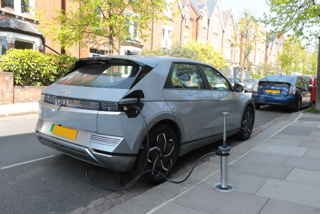British Gas operates one of the UK’s most high profile fleets and, having launched its road risk programme almost a decade ago, can show that investment in safe driving pays.
The raw figures covering the past 12 months make particularly impressive reading: millions of pounds saved in repair costs; a 30% reduction in collision rates, despite fleet growth due to internal expansion and acquisition; an 18% lower commercial vehicle incident rate than the national average. Further underlining the safe driving focus is the fact that all new vans will now carry the strapline “British Gas promotes courteous and safe driving”. Although the road risk programme has been running since 2007, critically it has been transformed into a proactive initiative, from being reactive.
Jon York is the company’s first full-time road safety manager. “Previously, we just supported those employees that had reported an incident, or had driver licence penalty points,” he says. “Now we are making all of our commercial vehicle drivers safer.”
As the programme continues to evolve – and with much national concern over the road safety of young drivers – British Gas launched its Young Driver Academy (YDA) in summer 2014.
Nationally, fewer than one in 12 licence holders are under 25, yet one in five fatal and serious injury crashes involve a driver of that age. Often the victims are under 25 themselves, with road crashes the biggest killer of young people in the UK and worldwide.
It was the launch of the YDA that was a major contribution to British Gas being named safe fleet of the year at the 2015 Commercial Fleet Awards. The judges said: “The YDA demonstrates a commitment by British Gas to improve safety among less experienced drivers.”
British Gas launched the initiative after analysing vehicle claims by age category, which identified under 25s as the single biggest group at risk. In 2013, 45% of the company’s young drivers were involved in a collision. That has now dramatically reduced to just 4%.
Young Driver Academy
The YDA is a mandatory 12-month programme comprising nine units suited to company operational requirements, delivered during six ‘on the job’ visits. At the end of each of these, targets are set on specific areas of driving, which are coached during the visit and monitored at the next one.
Driver profiling via the in-van telematics system is activated to monitor harsh manoeuvres – acceleration, braking and cornering – with candidates coached to improve their driving style. Safety scores are recorded to monitor progress and York delivers feedback direct to candidates.
Additionally, a smartphone application enables young drivers to monitor their own safety scores and a separate application enables them to undertake weekly walk-around checks of their vehicles with any defects reported for rectification.
“Feedback from our young drivers has been excellent. If the skills gained become skills for life then we have achieved what we set out to do,” York says.
“The programme has resulted in a massive reduction in collisions involving our young drivers, which shows that it has been a phenomenal success. Once a young driver has completed the programme we don’t expect them to have a collision. I’ve had young drivers and their managers knocking on my door wanting to be involved as soon as possible. They have a driving licence, but don’t know how to drive in many situations, such as on motorways.
“Also, because of the cost of private insurance, many don’t have their own car so the only vehicle they drive is a British Gas van.”
To-date, 90 under 25-year-olds have completed the programme, each achieving a BTEC Level 2 qualification (SQA in Scotland), with a further 350 on the course and 200 more waiting to start. That number is set to rise, as the company expands its employment base.
British Gas has a 13,500-strong light commercial vehicle fleet, making it one of the largest operations in the UK. In 2015, a further 1,000 vans were added as the company recruited more employees to undertake a programme to install smart meters in homes across the country. As that programme gathers pace and more smart energy experts are recruited, the fleet will expand by a further 3,000 vans by the end of 2017.
Meanwhile, British Gas has made a public commitment that 10% of the vans on its fleet will be electric by 2020.
In recognition of that, British Gas has introduced a three-hour ‘induction to electric vehicles’ as part of its road risk programme.
“When an engineer swaps their diesel van for an electric van they need to have confidence in the vehicle in terms of the technology and the driving style to adopt,” says York. “Driving an EV for the first time presents different challenges to those of a diesel van.”
At the heart of the British Gas safe driving regime is its Driver Risk Management System (DRMS). This records detailed information on individual drivers, including profiling, licence points, collision history, vehicle maintenance spend, unfair wear-and-tear, fuel economy and tyre replacement.
Drivers are allocated ‘risk points’, with monthly reviews indicating employees requiring additional support and bespoke development plans organised with backing from managers, the fleet department and trade union.
The support, depending on each employee’s risk profile, could be attendance at a two-hour interactive workshop, or a four-hour on-road advanced driving course. They are delivered by British Gas’s driver training partner, FleetMaster Group, with trainers fully briefed on the issues that require addressing on an individual basis rather than generic training.
Online driver development records, which can be viewed by managers, fleet staff and members of the British Gas health, safety and environment team, now stretch back to 2011 giving, says York, “extremely useful data” on the performance of each employee. Additionally, safety training to help employees identify hazardous driving conditions and learn defensive driving techniques is focused on employees deemed to be most at risk.
They include young drivers, new drivers, employees clocking up high mileages and those that have switched to a different type of vehicle within the fleet.
Training the trainers
A further initiative has seen four-hour ‘train the trainer’ workshops delivered to 600 line managers, designed to produce a consistent safety message across the company.
The result was that last year all 13,500 engineers attended a two-hour interactive workshop. Delivered by the line managers, they focused on three key messages: risk assessment for the road, speed awareness and defensive driving. All drivers received a copy of the Highway Code, with York explaining that “this is for life; not just for learner drivers”.
“It was a major undertaking that we feel benefits our drivers and all other road users,” he says. “Moving forward, line managers are now responsible for their local road safety, supported by myself and the fleet team.”
The two-hour interactive workshop was introduced because, says York, “a large percentage of our drivers were deemed low risk, so never actually attended a driver training course. However, we believed the investment worthwhile and, among that initial group of 9,000 engineers who attended the first workshops, we have seen a subsequent 41% reduction in vehicle damage.
“Many of our managers and engineers passed their driving test 30 years ago. Their response to the programme has been fantastic because they are learning new skills. No one is too old to learn.”
As part of DRMS, all new employees go on a BTEC Level 3 advanced driving course as part of their induction. Existing drivers can complete BTEC level 3 driver development training.
“There is now a much greater focus on vehicle condition,” says York. “At team meetings, managers and trade union safety reps will walk around the car parks studying van condition and challenge engineers about any damage, however minor, and whether or not it has been reported.”
While more vehicle damage is being reported, the severity of incidents is very much on the decline, delivering huge financial savings in own damage and third party costs, according to York.
“Drivers are more aware of their responsibilities and are more cautious so when a collision does occur they tend to be slow speed, low impact,” he says.
Reducing accidents – and costs
Underlining British Gas’s continuous education approach is the fact that low severity incidents have reduced to 0.2 per million kilometres driven, down from 4.9 in 2013.
British Gas self-insures, with York explaining: “Our road safety initiatives have significantly reduced third party deductibles, which is reflected in premium savings.
“We have invested significant amounts of time and energy educating our insurers about our approach to fleet risk management,” he adds. “Additionally, giving drivers the relevant assessments and training is a positive message for insurers, underlining our commitment to safety and reducing exposure to major claims.”
Despite the growing fleet, as more van drivers receive training York expects crash-damage savings to further increase, along with massive savings in fuel and vehicle wear-and-tear as engineers adopt a more sympathetic driving style.
British Gas engineers travel some 140 million miles a year. “The company recognises that driving is a dangerous and high-risk activity that employees undertake every day,” says York. “It is for this reason that British Gas aims to prevent and protect staff, and any third party, from being harmed.
“Ensuring the safety of our drivers is a key priority. Our rigorous road safety standard strives to place safety at the forefront of our minds and helps create safer driving practices.”
British Gas was one of the first fleets in the UK to fit speed limiters to all vans – a measure implemented in 2006 and a trend followed by many other commercial fleets.
“By limiting the speed of all vehicles to 70mph, the company was able to reduce costs as a result of greater fuel efficiency,” says York. “As most serious crashes are at high speed, the limiters have had a positive impact on the severity of crashes as most are now slow speed manoeuvring. In turn, the level of crash-related damage has reduced, thereby cutting costs.”
British Gas was also in the vanguard of fleets banning hands-free mobile phone use for calls and texting – again proving effective in driving down incidents.
As they join the fleet, electric vans are now being equipped with reversing cameras. In addition, in a 2016 trial forward-facing cameras will be installed in approximately 120 vans in London. A cost analysis report will be written and if the project proves a success, such initiatives could be rolled out to vans in other parts of the country.
Telemetry technology is fitted in all British Gas vans and used for work schedule deployment. In addition, 20% of drivers deemed ‘high risk’ also have the devices fitted to measure on-road behaviour with information fed into their DRMS scores.
In 2016, the technology will be enabled to measure all van drivers’ on-road behaviour, such as harsh acceleration, braking and cornering. Targeted coaching will then be delivered to overcome any individual issues.
Additionally, campaigns highlighting specific areas of danger for drivers are also run regularly and most recently include: safe winter driving and A-pillars fitted with stickers reminding drivers to pay particular attention to cyclists and motorcyclists that may be in their blindspots.
The introduction of smartphone apps for vehicle walk-around checks and road safety is enabling drivers to better manage these elements.
The award judges added, when citing British Gas as safe fleet of the year: “The company has put resourcing into risk improvements with focused road safety initiatives to target big issues and interactive workshops to train line managers to reach out to engineers. There are tangible reductions in collisions and associated costs. The in-house risk management team and scorecard system is commendable, particularly on such a large fleet.”
York believes it is critical to communicate the safe driving message to other fleet operators (see panel, above) and road users generally.
When first in his role, York targeted a 5-10% reduction in British Gas’s collision rate and a 10% reduction in costs.
But as the range of initiatives continue to be rolled out across an expanding fleet operation, initial indications would suggested the results will be significantly better.
Factfile
Company: British Gas
Headquarters: Windsor
Road safety manager: Jon York
Fleet size: 13,500 light commercial vehicles
Mileage: 140 million per year
Spreading the road safety gospel far and wide
Sharing the road safety gospel with fleet decision-makers nationwide is one of Jon York’s missions, as he focuses all his energies on introducing initiatives that make British Gas drivers safer on the roads.
Having started life at British Gas almost 36 years ago as an apprentice engineer, York moved into fleet some 15 years ago. Promoted in 2014 from fleet operations manager, where risk management was part of his role, to the first British Gas road safety manager, York says: “If, as a road safety or fleet manager, we can all help to save lives then we have achieved something. Whenever I leave British Gas, I want to walk away knowing that I’ve had a great career and have left some sort of legacy.”
That’s why he believes part of his job is not only to achieve buy-in to the myriad safe driving initiatives for British Gas employees, but to also speak at industry events and share best practice.
British Gas is a member of both the Freight Transport Association’s Van Excellence initiative and the Driving for Better Business campaign. York speaks regularly at their events and other seminars and workshops. British Gas also undertakes fleet benchmarking and enjoys close relationships with other utility organisations that have a similar high-level occupational road risk management focus.
“What I and colleagues are seeking to do is to make the roads safer for everyone,” says York.




















Kevin - 29/09/2016 13:31
As iPads and tablets become more popular for drivers they should all have one of these to use them safely and comfortably in their vehicles while not driving! http://kck.st/2d2WxBc